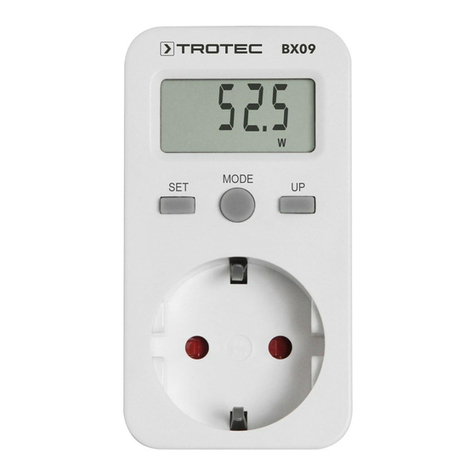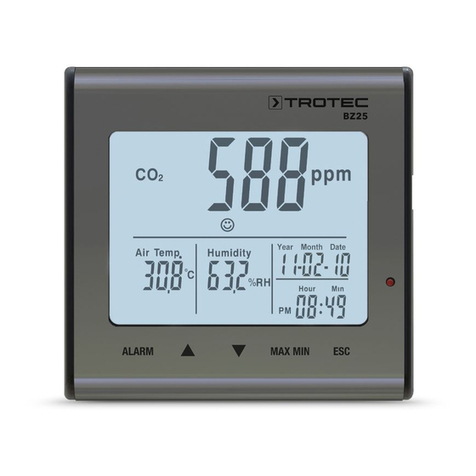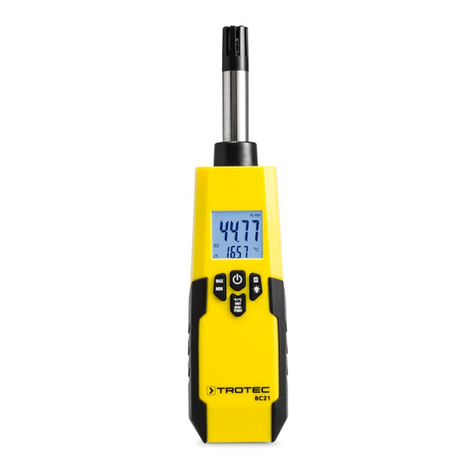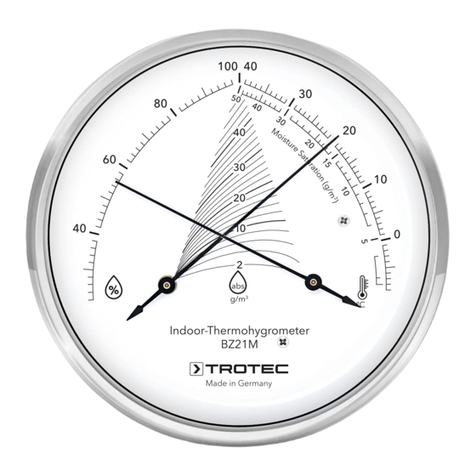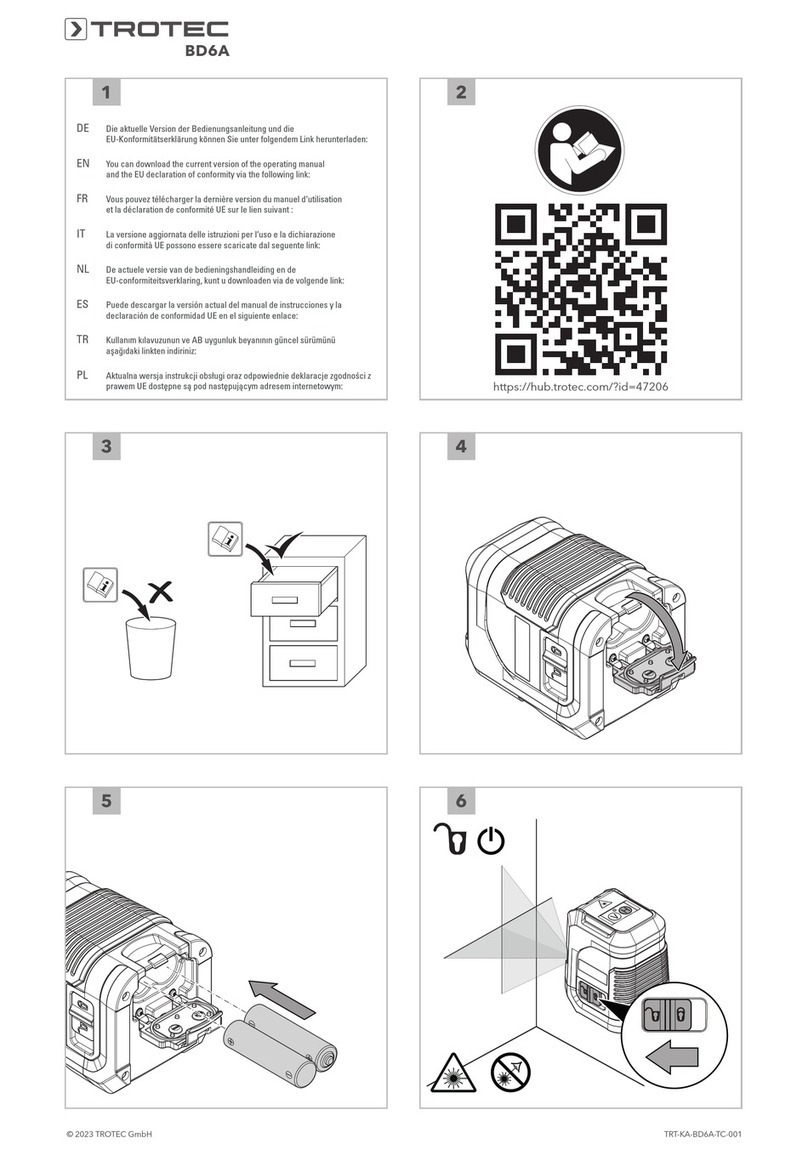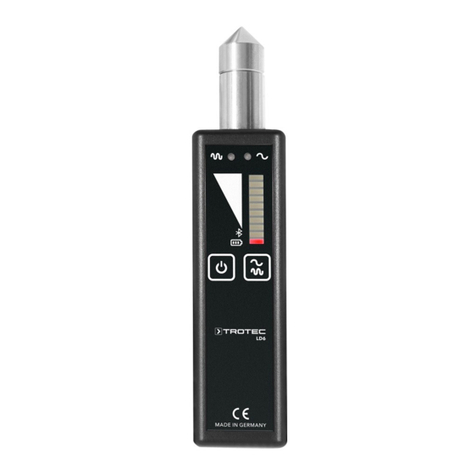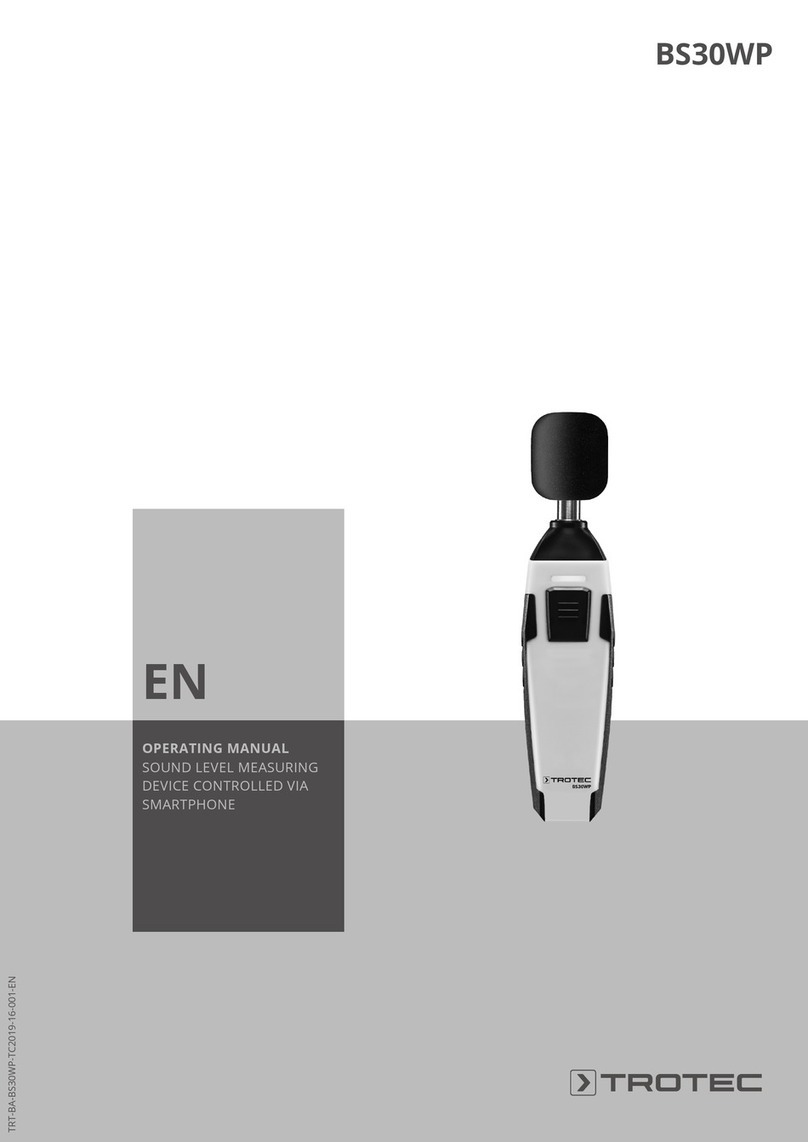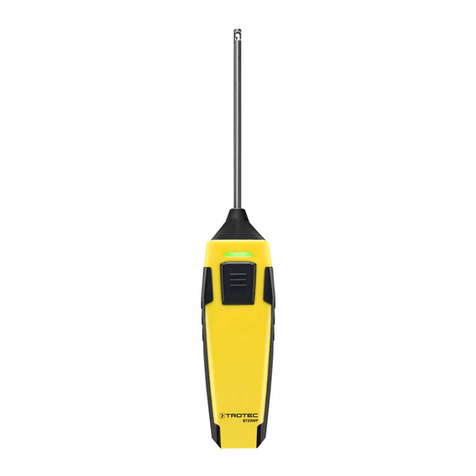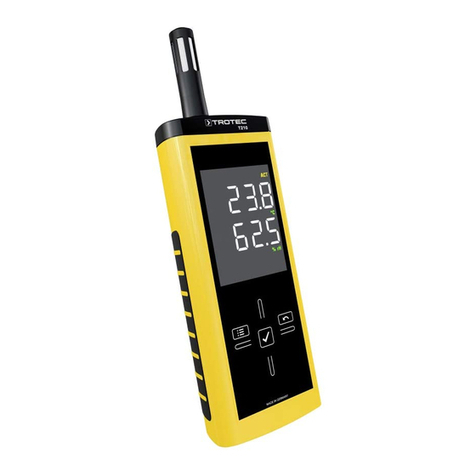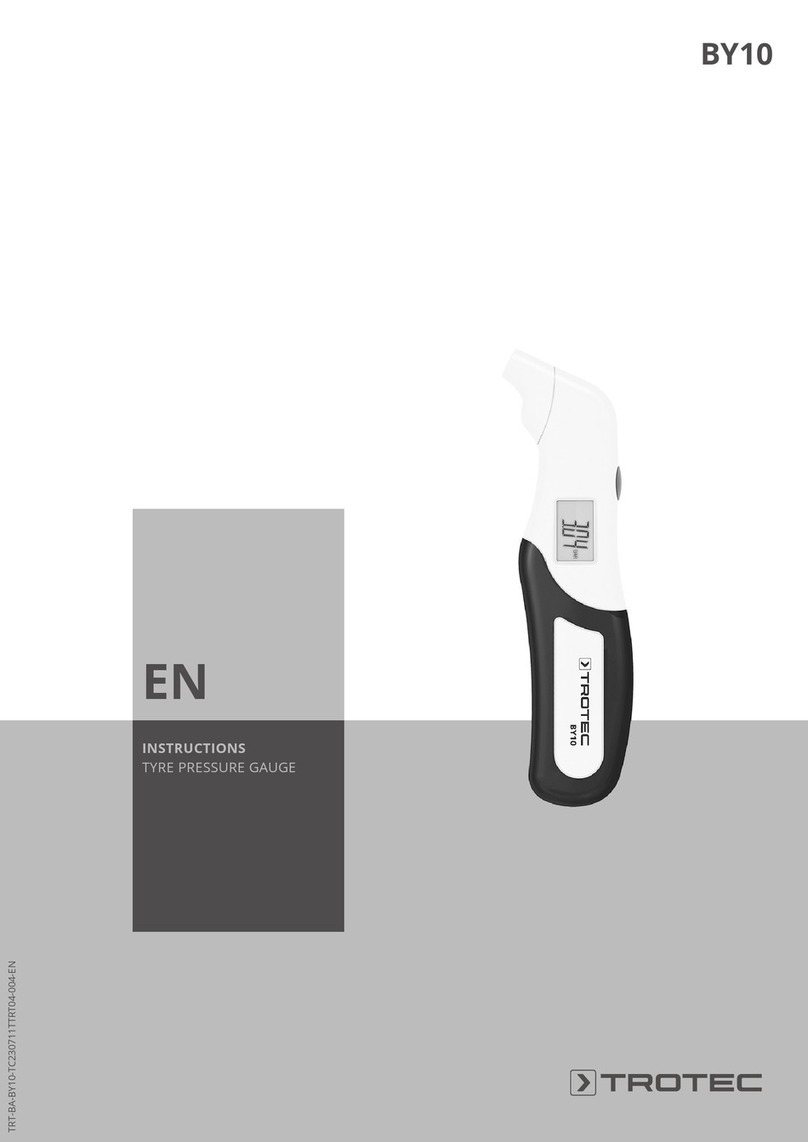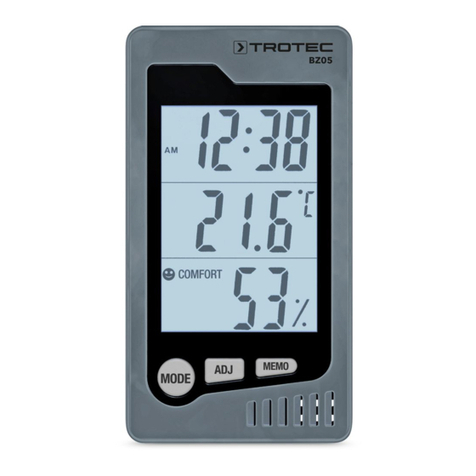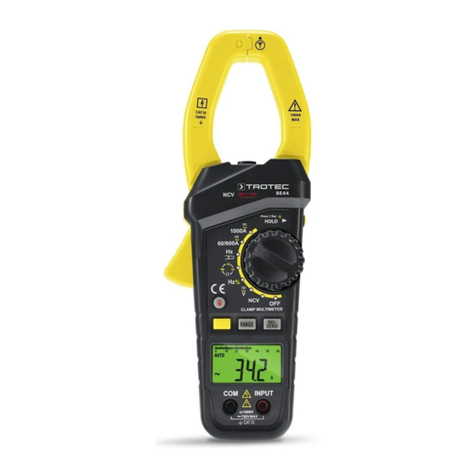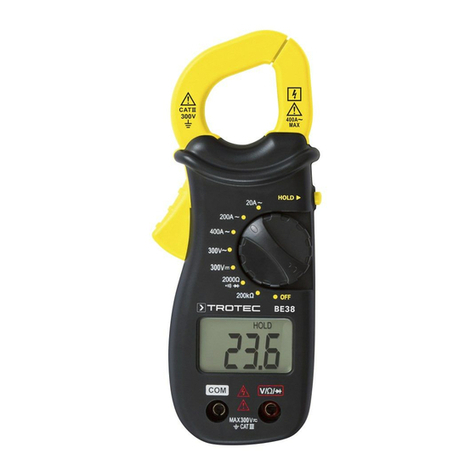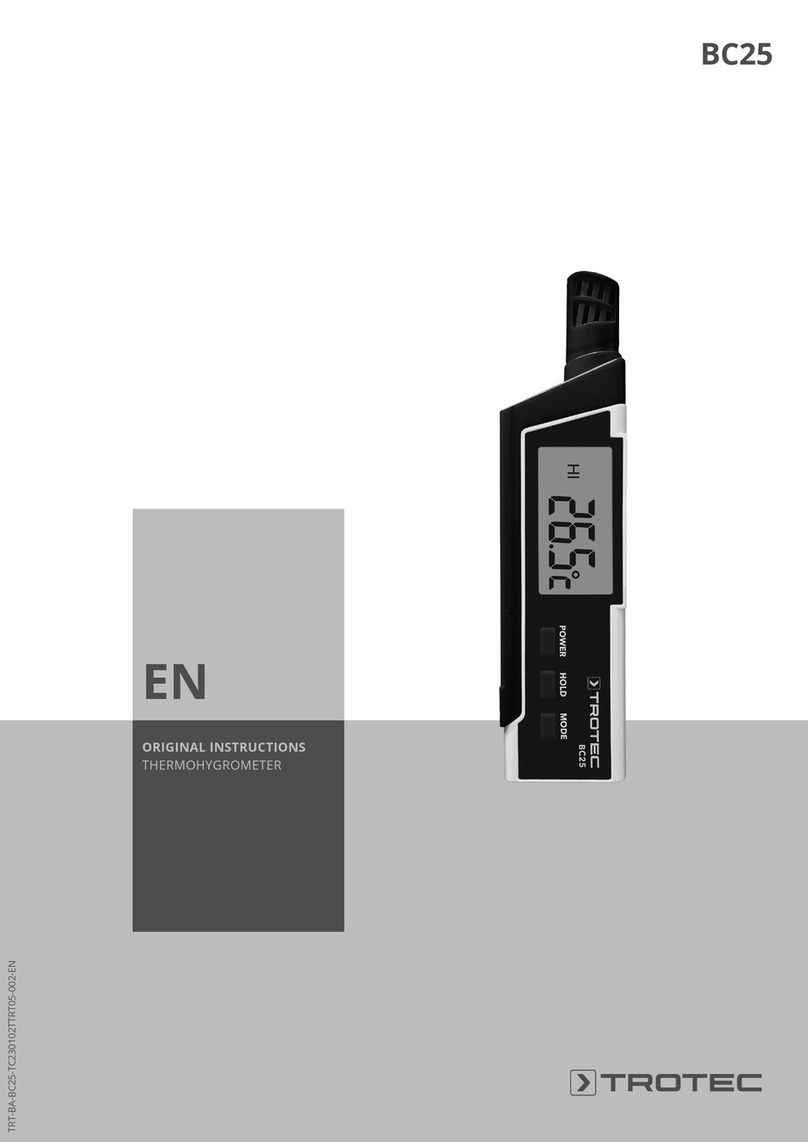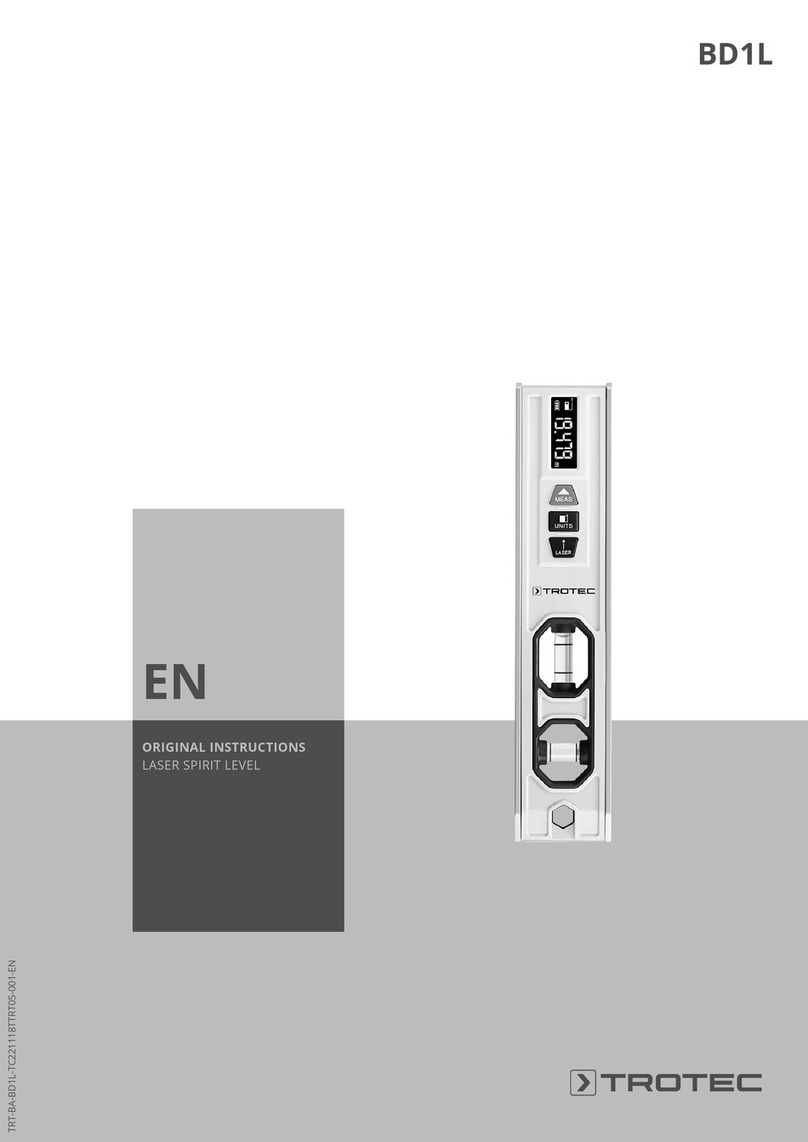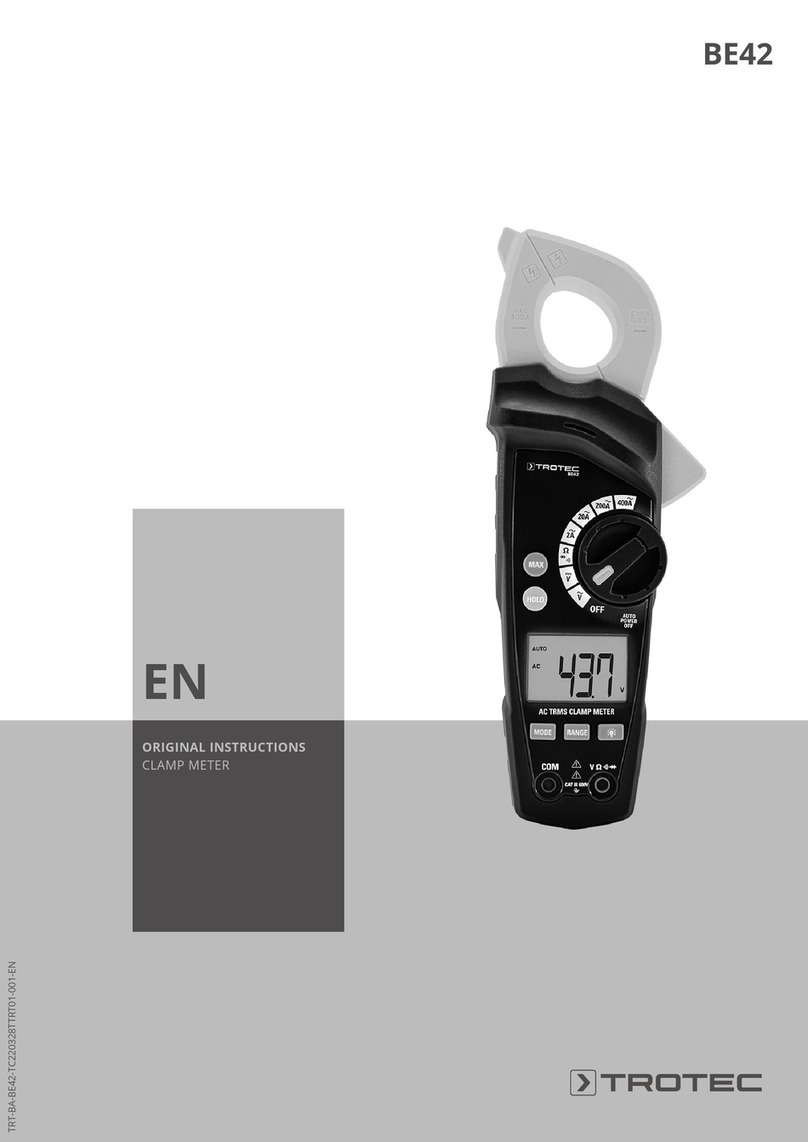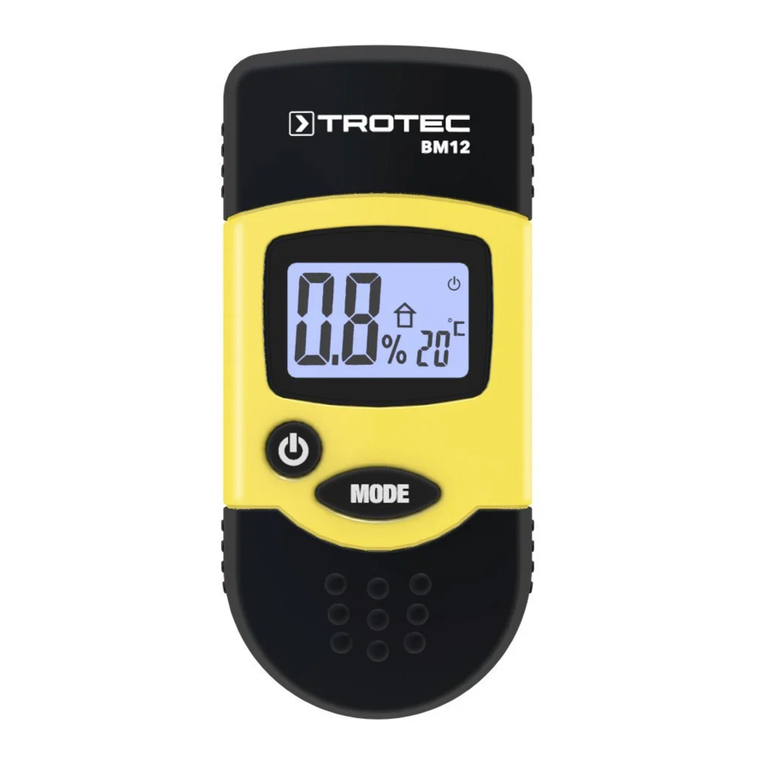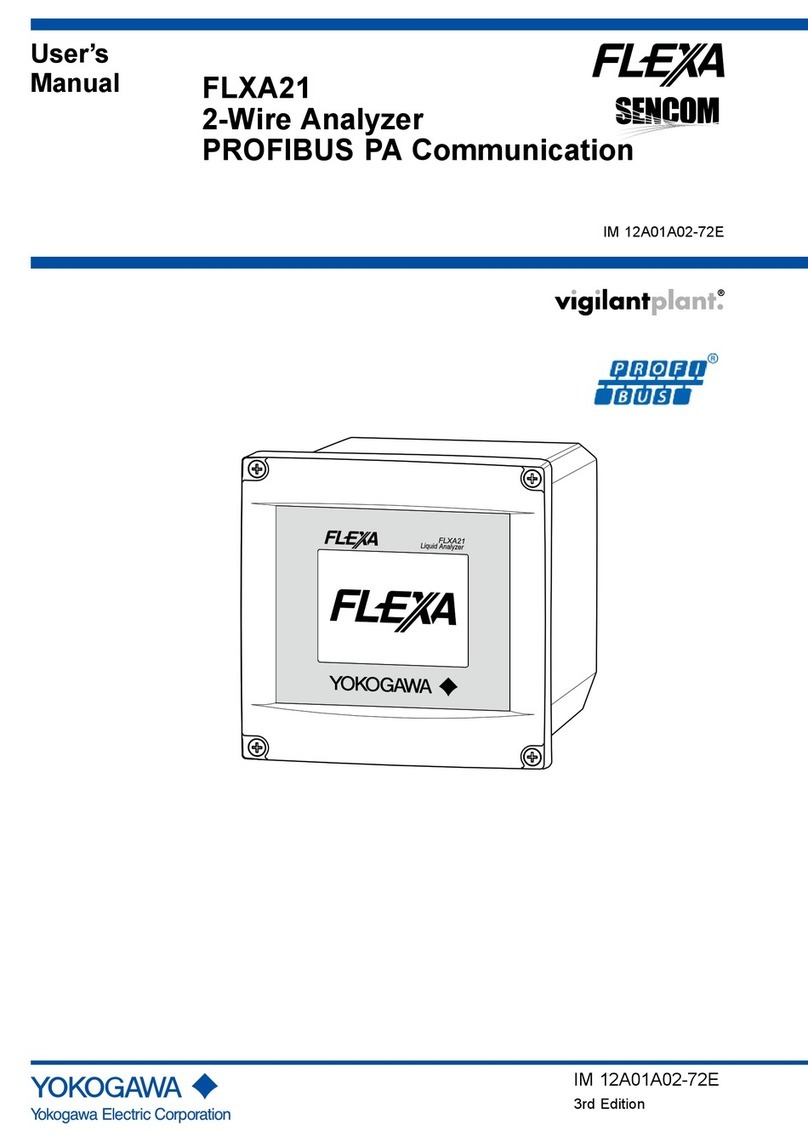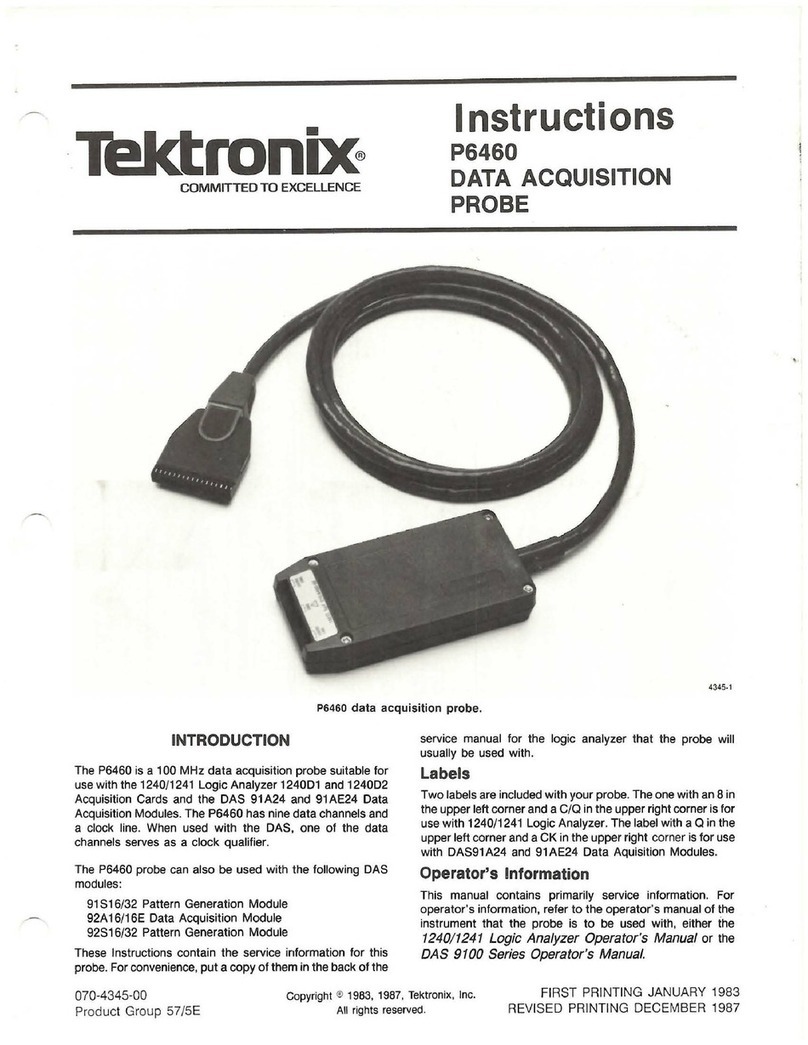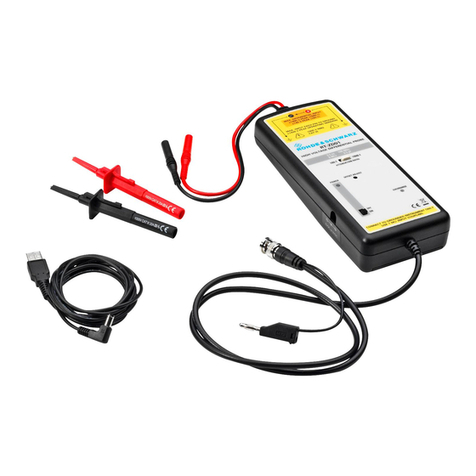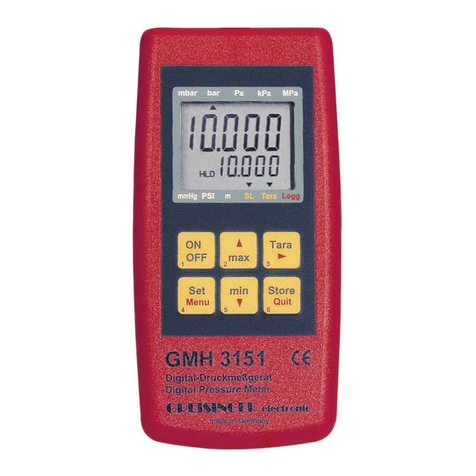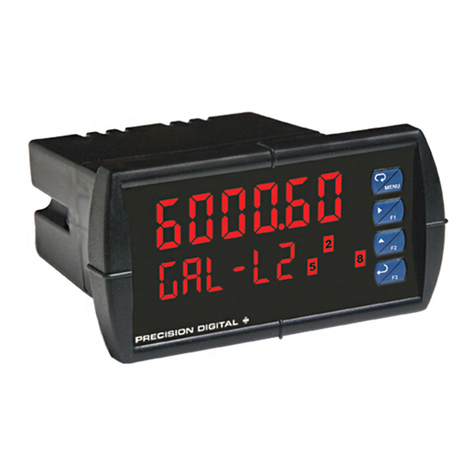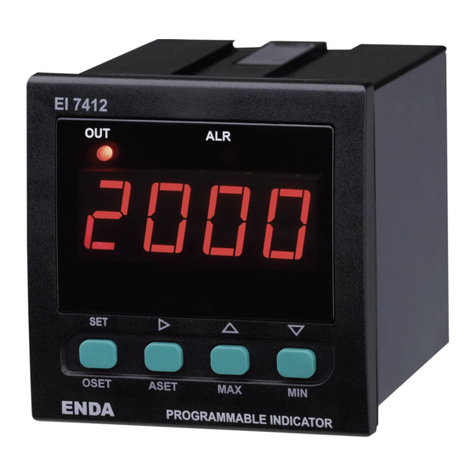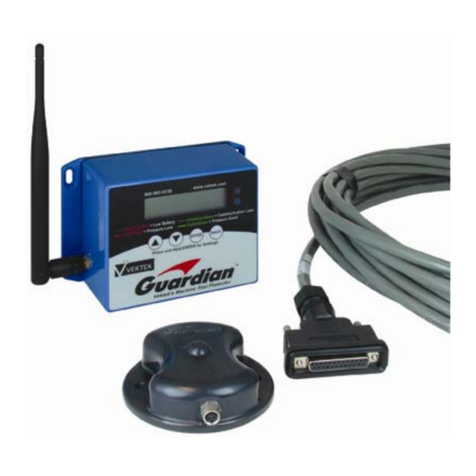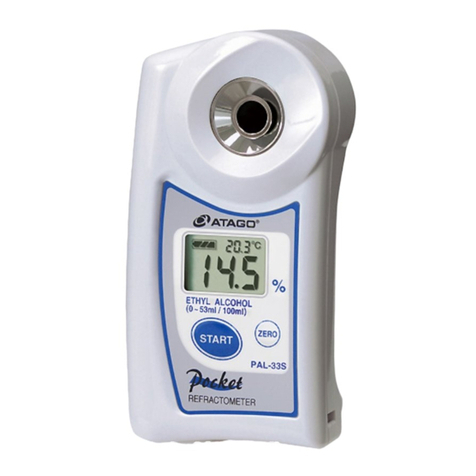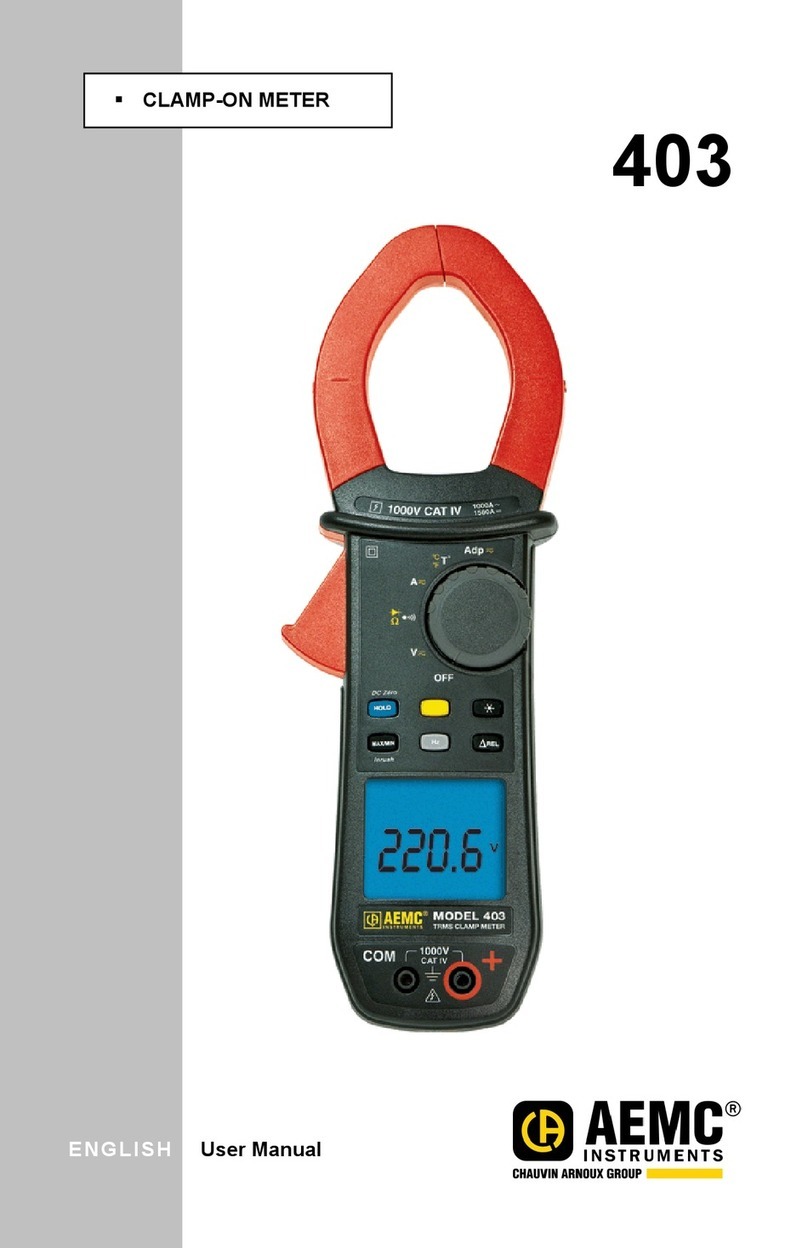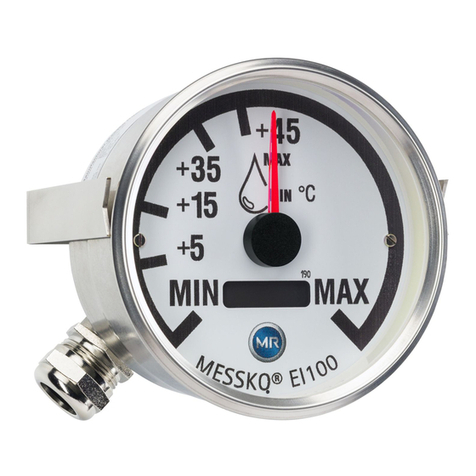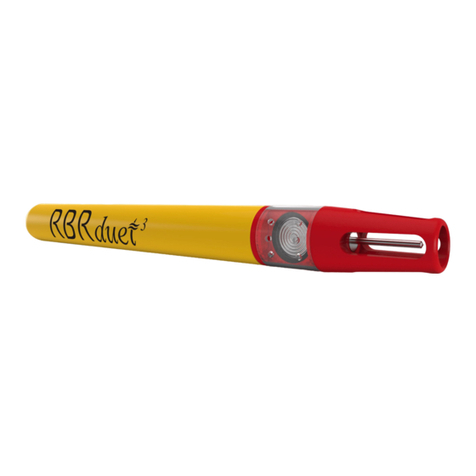Trotec LD6000 PTS User manual

OPERATING MANUAL
ACOUSTIC TUBE PROBE
EN
TRT-BA-LD6000PTS-HS-003-EN
LD6000 PTS

A - 1 EN
Operating manual for LD6000 PTS
Table of contents
01 Safety ..................................A-1
02 Intended use .............................A-1
03 Scope of delivery and overview ...............A-1
04 Start-up and application ....................A-2
05 Acoustic leak detection .....................A-5
06 Pipe and pinpoint location ...................A-6
07 Troubleshooting ...........................A-7
08 Application examples.......................A-8
09 Cleaning, storage and transport ...............A-8
10 Technical data ............................A-9
The measuring device at hand was built according to cur-
rent state-of-the-art technology and fulfils valid European
and national directives. This conformity has been tested and
the corresponding declarations and documents are kept on
file by the manufacturer. To keep this condition and ensure
safe operation, as a user, you must observe the following
safety instructions.
01 Safety
We accept no liability for damages caused by non-
observance of this manual or unprofessional handling. Any
warranty claims are voided in such cases!
m Prior to using the LD6000 PTS, this operating
manual is to be carefully read and observed in
every particular.
For reasons of safety and conformity (CE), any unauthor-
ised change made to the device construction or compo-
nents which are to be used with the measuring device are
prohibited!
• The LD6000 PTS me only be used for drinking water
systems. The user is responsible for any other kind of use.
Once used in other media, reuse for drinking water is
prohibited!
• Observe the storage and operating conditions!
• Before using the LD6000 PTS, always observe the
disinfection instructions (see page A-4)!
• The system's maximum operating pressure is 16 bar!
• The maximum bending radius of the probe and the fibre
optic cable is 120 mm (which corresponds to 90° for
pipes with DN 50). In order to avoid jamming or even
cable break, the fibre optic cable is only to be pushed with
utmost caution when frequenting bottlenecks.
• The only party responsible for determining measured
results to be valid, drawing conclusions and deriving
actions is the user! The correctness of the results
presented is excluded from any liability or guarantee.
Liability for damages which have been caused by utilising
the presented measured results is strictly excluded.
02 Intended use
The LD6000 PTS and associated accessories serve the
purpose of leak detection in drinking water pipelines.
The device may only be used for this intended use while
complying with the specified technical data.
03 Scope of delivery and overview
3.1 LD6000 PTS tube probe
1. Galvanized steel pipe frame with aluminium reel
2. Polykat fibreglass with integrated stranded copper
wires
3. Bluetooth transmitter with connection option for a
frequency generator
4. Flexible sensor head with precision microphone
5. Pressure-resistant cable passage
6. Storage container with disinfectant
7. Mechanical metre counter for length measurement
1.
2.
3.
4.
7.
6.
5.

EN A - 2
Operating manual for LD6000 PTS
3.2 LD6000 PTS accessory case
1. Disinfectant – 250 ml aerosol can
2. Bluetooth headphones
3. GEKA couplings 1 inch internal thread and 1 inch
external thread
4. Spare 9 V battery
5. Optional: LD6000 PTS Bluetooth receiver
6. Charging adapters for 230 V socket and 12 V cigarette
lighter; mini USB charging cable
7. Hose adapter
3.3 Optional accessories
1. LD6000 combination detector
2. LD6000 PTS Bluetooth receiver
3. Water- and impact-proof Bluetooth speaker
4. SeekTech SR20 and SeekTech ST510 (pipe detector and
transmitter)
04 Start-up and application
The LD6000 PTS transmitter unit is running on a customary
9 V battery. The Bluetooth headphones, Bluetooth speak-
er and Bluetooth receiver are provided with an integrated
rechargeable battery. Before start-up make sure that the
devices are charged or the battery has sufficient voltage.
Overview of the functions of the LD6000 PTS transmitter
unit.
LD6000 PTS
The functions of the Multi-function button (5) are described
below.
• If the button is pressed for approx. 3 seconds while
switched off, the transmitter unit switches on.
• If the button is pressed for approx. 6 seconds while
switched off, the last active Bluetooth connection will be
deleted. Simultaneously the device switches over into
pairing mode (search mode).
• If the transmitter unit is switched on and a Bluetooth
connection is established, briefly pressing the button
activates the "mute"function (muting). If the "MUTE"LED
is illuminated, sound transmission is active. If the LED is
not illuminated, the transmission is muted as well. The
level indicator is not affected by this.
• To switch the device off, press the button for approx. 3
seconds. All parts of the "Level LED"light up. The device
only fully switches off when letting go of the button.
The Battery LED (2)indicates the battery's voltage condi-
tion. If the LED is constantly lit, the battery has sufficient
voltage. If it flashes slowly, the battery should soon be
changed. If it flashes quickly, the voltage is insufficient for
another measurement and the battery has to be changed
first.
The Bluetooth LED (3) indicates, whether there is a Blue-
tooth connection. If the LED is constantly lit, a connection
is established. If it flashes, the device is in pairing mode
(search mode). If it is not illuminated, the connection is not
made and the transmitter unit will only reconnect (pair) with
the last active connection.
The Level LED (4) indicates the intensity of the recorded
sound. Please note that a leaking sound does not necessar-
ily cause a full-scale deflection of the Level LED. The Level
LED is only intended for orientation purposes.
2.
1.
3.
4.
5.
7.
6.
1. 1.
2. 3.
4.
5.
6.
1. 9 mm connectors
2. Battery LED
3. Bluetooth LED
4. Level LED
5. Multi-function button
6. "Mute" LED

A - 3 EN
Operating manual for LD6000 PTS
The "MUTE" LED (6) indicates, whether the recorded sound
is transmitted or the transmission is muted. If the LED
is illuminated, the sound is transmitted. If the LED is not
illuminated, the transmission is muted.
The two integrated 9 mm connectors (1) serve to connect a
frequency generator (e.g. SeekTech transmitter ST510) for
pipe detection. If a connector is connected to the generator
and at the same time a ground spike is used, the course of
the inserted fibre optic cable can be traced. If both connec-
tors (signal and ground) are connected, the search pig at the
probe tip is contacted. Thus an exact position for the pig can
be determined. The pig was optimized for use with 33 kHz.
Other common frequencies can only be used to a limited
extent or not at all.
To install the LD6000 PTS in a pipeline to be inspected,
please proceed according to the illustrated getting started
guide which is supplied with the device. The above
mentioned usage is only one example for possible applica-
tions. For different application scenarios the procedure is
to be analogous. In chapter 8 Application examples you will
find further possible uses of the LD6000 PTS.
4.1 Bluetooth connection
In order to transmit the sound recorded by the sensor head,
a Bluetooth connection has to be established between the
transmitter unit and the headphones, Bluetooth receiver or
speaker (optionally available). The pairing mode (search
mode) for the corresponding devices is described in tabular
form.
LD6000 PTS
4.1.1 Bluetooth transmitter
Bluetooth setting Control LED display
Re-establish last
Bluetooth connection.
Switch on
transmitter (press
Multi-function button
for 3 s).
Bluetooth LED
inactive
Switch Bluetooth into
pairing mode (search
mode).
Press the Multi-func-
tion button for 6 s
while switched off.
All level LEDs light
up, Bluetooth LED
flashes.
Bluetooth setting Control LED display
Establishing
connection.
Waiting for the other
end.
Blue LED flashes.
Bluetooth connection
is established.
Bluetooth LED
constantly lit.
Connection error All Level LEDs are
flashing (quickly).
4.1.2 Headphones
Bluetooth setting
Control LED display
Re-establish last
Bluetooth connection.
Switch on the device
(press power button
for 5 s).
Blue LED flashes
briefly and then
lights up perma-
nently.
Switch Bluetooth into
pairing mode (search
mode).
Switch on the device
(press power button
for 7 s).
Blue LED flashes
quickly.
Bluetooth connection
is established.
A short beep sounds
in the headphones
to confirm and the
blue LED lights up
permanently.
No connection Blue LED flashes
quickly.
4.1.3 Bluetooth receiver (for LD6000, optional)
Bluetooth setting
Control LED display
Re-establish last
Bluetooth connection.
Switch on the device
(press power button
for 4 s).
Blue LED flashes.
Switch Bluetooth into
pairing mode (search
mode).
Press the power
button for approx. 7
s while switched off.
Blue and red LEDs
are flashing (quickly)
in turn.
Establishing
connection.
Waiting for the other
end.
Blue and red LEDs
are flashing (quickly)
in turn.
Bluetooth connection
is established.
Blue LED flashes
every 5 s (slowly).
No connection Blue LED flashes
every 1 s (quickly
and briefly).
4.1.4 Speaker (optionally available)
Bluetooth setting Control LED display
Re-establish last
Bluetooth connection.
Switch on the evice
(press power button
for 4 s).
Power LED is
illuminated.
Switch Bluetooth into
pairing mode (search
mode).
Briefly press
Bluetooth button.
Bluetooth LED is
flashing quickly.
Establishing
connection.
Waiting for the other
end.
Bluetooth LED is
flashing quickly.
Bluetooth connection
is established.
Bluetooth LED is
illuminated.
No connection Bluetooth LED is
flashing slowly.
or
BT receiver
for LD6000

EN A - 4
Operating manual for LD6000 PTS
4.2 Disinfection – disinfection instructions
mBefore using the LD6000 PTS, all parts coming
into direct contact with the drinking water must
be disinfected. Proceed according to the following
instructions.
mAlways wear suitable protective gloves (supplied
in the accessory case) when filling the storage
container or refilling the spray flask.
The disinfectant is a neutral, liquid cleaning agent based
on especially stabilized 3% hydrogen peroxide. It is used
for environmentally friendly cleaning and sterilization and
approved for use in drinking water systems.
mNo general HAZMAT regulations apply. However,
the usual precautions are to be taken when
handling chemicals.
1. First spray a generous amount of disinfectant on
the sensor head of the LD6000 PTS and let it sit for
approx. 5 minutes.
2. Fill the storage container to approx. ¼ with disinfectant.
3. When measuring, the storage container is to be
positioned vertically at the top to enable a continued
flow of the disinfectant.
When inserting the fibre optic cable into the pipeline, it is
continuously pulled through the disinfectant solution. No
specific application time is required during insertion. The
agent is pH neutral and after use can be fed into the waste
water system without prior neutralization.
4.3 Connection of the LD6000 PTS cable passage
The cable passage is connected for a smooth insertion
of the flexible sensor head in the drinking water line. The
passage comes with a GEKA coupling approved for use in
drinking water systems. Prior to installation the water line
must be shut off!
Close the shut-off valve and then prepare the end of the
pipe section to be examined with a supplied GEKA coupling.
Always connect preferably straight pieces or branches of no
more than 45° to avoid the sensitive sensor head getting
caught during insertion.
If the distance between the attached GEKA coupling at the
pipeline and the next shut-off valve is too small, you should
use a hose adapter (supplied in the accessory case) to
connect the cable passage.
The GEKA coupling is now connected to the pressure-
resistant cable passage of the LD600 PTS.
Make sure that the storage container with the disinfectant
(see disinfection instructions 4.2) is positioned vertically at
the top.

A - 5 EN
Operating manual for LD6000 PTS
Before inserting the sensor head with the fibre optic
cable from the reel, the shut-off valve must again be opened
completely.
mBefore opening the shut-off valve make sure that
all connections have been made correctly.
4.4 Insertion of the fibre optic cable
m In case of DN50 pipes the fibre optic cable can
be pushed around bends of 90°. Despite this
flexibility and the high breaking load, one has to
exercise utmost caution during every application
with 90° turns.
Should the probe get caught, try loosening it by careful
pushing and pulling. In the course of the insertion process
a very loud scratching noise will be audible via the head-
phones/speaker, which is a result of the pushing. This can
be suppressed by use of the MUTE function.
05 Acoustic leak detection
The fibre optic cable with integrated sensor head for audio
recording is inserted in the defective pipe. The sound
recorder is very sensitive and records even barely percep-
tible sounds. Nevertheless, despite this sensitivity, it can-
not be excluded that a leak is not recognized under certain
conditions. This might either be due to the fact that the leak
causes no leakage noise or else the sensor head no longer
works correctly. Hence, prior to every insertion, check
whether the sensor head records the sounds correctly by
running you finger down the tip.
It is recommended to insert the fibre optic cable in steps of
approx. 30-50 cm. At the end of each step, the probe should
be allowed to come to a rest in order to record the sound in
the probe's environment.
5.1 Using the Bluetooth headphones
LD60 00 PT S
In the case of leak detection using the LD6000 PTS in
connection with the Bluetooth headphones, the noisiest spot
in the defective pipe is the search target. We proceed on the
assumption that every leak brings about a leakage noise.
The closer you get to the fault location, the more sound
energy will be recorded by the sensor head, which in turn
results in a perceptible increase of the volume. At the same
time a shift in the pitch to higher frequencies will be audible.
Push the probe so far into the pipe until you have detected
the noisiest location. For fine tuning push and pull the probe
past the leak for a number of times.
5.2 Via integrated level indication
The integrated level indicator at the LD6000 PTS is merely
for orientation purposes. Please note that a leaking sound
does not necessarily cause a full-scale deflection of the
Level LED. On principle, though: the closer the sensor is
pushed to the point of leakage, the more noticeable will be
the deflection.
5.3 Using the Bluetooth receiver and LD6000 combina-
tion detector
LD60 00 PT S
LD600 0 PTS
When combined with the LD6000 combination detector
the LD6000 PTS is the perfect visual addition for acoustic
leak detection. By use of the LD6000 combination detector
frequencies to 4000 Hz can be visualized. Optimum results
can be achieved in "smart mode"and here in the user-
defined application. Also recommendable are non-stop
measurements. For details regarding the settings please

EN A - 6
Operating manual for LD6000 PTS
read the user manual of the LD6000 combination detector.
Fundamentally, here, too: the closer you get to the fault
location, the bigger the sound level (numeric indication
in the LD6000 combination detector). At the same time a
shift in the pitch to higher frequencies will be visible (lower
frequency-response diagram in the LD6000 combination
detector).
06 Pipe and pinpoint location
Described below are 2 methods to determine the position of
the probe head. For one thing by using a common locating
device (not included in the scope of delivery) and for
another by means of a perambulator.
Method 1 – locating device
A common locating device is required for pipe and pinpoint
location (not included in the scope of delivery). Typically
such a locating device consists of transmitter and receiver.
Read the operating manual of your locating device for
proper usage.
After successful acoustic leak detection leave the fibre
optic cable at that position in the defective pipe where you
detected the maximum level. Then connect the frequency
generator of your locating device to the LD6000 PTS.
Generally true for all frequency generators of
locating devices:
Probe detection
When one connector is connected to the generator
and the other to a ground spike stuck into the earth,
the course of the inserted fibre optic cable can be
traced.
Locating pinpoints
When both connectors (signal and ground) respectively
are connected to the generator, only the search pig at the tip
of the probe will be contacted. Thus an exact position for the
pig can be determined.
The locating function was optimized for the use with 33 kHz,
othercommonfrequenciescanonlybeusedtoalimitedextentor
not at all.
33 kHz
33 kHz
Method 2 – perambulator
After successful acoustic leak detection also leave the fibre
optic cable at that position in the defective pipe where you
detected the maximum level. Now read the developed
uncoiling length from the mechanical metre counter.
Memorize the value and then walk down the corresponding
length with a perambulator. The position, where the values
of perambulator and mechanical metre counter coincide,
corresponds to the location of the probe head inside the
pipe.
2 m

A - 7 EN
Operating manual for LD6000 PTS
07 Troubleshooting
Fault description Potential causes Proposed solution
LD6000 PTS does not connect via
Bluetooth using the headphones/
Bluetooth receiver/ speaker
(optionally available).
The other end is not switched on. Switch on the other end.
The other end was paired with a different
device.
Refresh the pairing mode (search
mode) between LD6000 PTS and
headphones/ Bluetooth receiver/
speaker.
Pairing (search mode) was not performed
correctly.
Devices cannot locate each other
when in pairing mode (search
mode).
One of the devices to be paired is not in
pairing mode (search mode).
Switch both devices into pairing
mode (search mode) and wait for a
few seconds until their connection is
established.
The devices are installed too far apart to
connect (maximum reach 10 m).
Bring the devices as close as possible
to one another during pairing mode
(search mode).
Level indication at the LD6000
PTS starts to flash in pairing mode
(search mode).
Fault during pairing mode (search mode)
Switch off the LD6000 PTS and
perform pairing (search mode) once
again.
Connection is suddenly lost during
operation.
Headphones/ Bluetooth receiver or
speaker positioned too far away from the
LD6000 PTS (maximum reach 10 m).
Bring the devices back into the
transmission range.
Batteries of the LD6000 PTS/
headphones/ Bluetooth receiver or
speaker (optionally available) are too low.
Change the battery of the LD6000
PTS or charge headphones/ Bluetooth
receiver/ speaker.
LD6000 PTS/ headphones/ Bluetooth
receiver or speaker have switched off for
no reason.
Switch the device back on.
LD6000 PTS can no longer be
switched on / off. Software bug
Briefly disconnect the battery of the
LD6000 PTS Bluetooth transmitter
and then reconnect it.
Connection between LD6000
PTS and headphones/ Bluetooth
receiver/ speaker (optionally
available) is established correctly,
but no sound can be heard.
The "mute"function (muting) at the
LD6000 PTS is active.
Briefly press the Multi-function button
(MUTE LED should be illuminated).
Fibre optic cable was damaged or is
visibly kinked (cable break). Return the device to the manufacturer
for repair/inspection.
Sensor head was damaged or torn off.
Locating of the fibre optic cable /
probe head is not possible.
The frequency generator is not properly
connected to the LD6000 PTS.
Connect the frequency generator
according to this manual.
The pipe is located too deep in the
ground or underneath a sealed surface
with metal.
Unfortunately it is not possible to
carry out detection here!
Fibre optic cable is damaged or broken. Return the device to the manufacturer
for repair/inspection.

EN A - 8
Operating manual for LD6000 PTS
08 Application examples
The following application examples indicate possibilities of
how to connect the LD6000 PTS to special built-in elements
of the piping system.
8.1 Insertion via domestic water meter
1 2 5 8 8 6
• Shut off the connection.
• Dismount the water meter.
• Affix the GEKA coupling.
• Fasten the hose adapter.
• Connect the cable passage.
• Open the house connection again.
• Insert the probe.
8.2 Insertion via free-flow valve
• Shut off the connection.
• Dismount the free-flow valve.
• Affix the GEKA coupling.
• Fasten the hose adapter.
• Connect the cable passage.
• Open the connection again.
• Insert the probe.
8.3 Insertion via detached pipe
• Put pipeline out of operation.
• Detach the pipe.
• Affix a suitable adapter by use of a GEKA coupling.
• Connect the cable passage.
• Put the pipeline back into service.
• Insert the probe.
8.4 Insertion via hydrant
• Attach adapter for hydrant by means of a GEKA coupling.
• Connect the cable passage.
• Fully open the hydrant.
• Insert the probe.
8.5 Insertion via tapping saddle
• Tap pipeline via a 45° tapping saddle.
• Fix GEKA coupling to valve (saddle).
• Connect the cable passage.
• Completely open the tapping saddle.
• Insert the probe.
09 Cleaning, storage and transport
m The following is to be observed for cleaning,
storage and transport of the device.
Cleaning
• Do not use any sharp objects or aggressive chemicals to
clean the LD6000 PTS!
Storage
• Always store the disinfectant in an upright position
(lid facing up).
• Protect the fibre optic cable from direct sunlight.
• For longer storage disconnect the 9 V battery of the
Bluetooth transmitter.
• Store in dry and dust-free surroundings.
• Do not expose to aggressive media.
• Storage temperature 0...40 °C
• Relative humidity 80 %
Transport
• Lock the storage container in place by means of the
rubber strap provided at the reel.
• Make sure that the device does not suffer any major
impacts during transport.
• For transport in a vehicle observe the road traffic
regulations on securing cargo.

A - 9 EN
Operating manual for LD6000 PTS
10 Technical data
Sensor:
• Highly flexible sensor head
• Integrated antenna (for pinpoint location)
• Sound recorder: frequency range 10 Hz to 10,000 Hz
• IP68 type of protection
Fibre optic cable and reel:
• 4.5 mm Polykat fibreglass
• Breaking load: 10.3 kN
• Maximum bending radius: 120 mm
• Length: up to 70 m
• Aluminium frame
o dimensions 570 x 400 x 160 mm
o weight approx. 7 kg
• Mechanical length measuring device
• Transport lock for disinfectant container
Passage:
• Pressure-resistant to max. 16 bar
• GEKA coupling approved for use in drinking water
systems
• Disinfectant container
Bluetooth transmitter (integrated in reel):
• IP66 type of protection (exclusive of battery compart-
ment)
• 9 V battery operation
• Bluetooth 2.0, class 2, frequency 2.4 GHz
• Range: 10 m
• Integrated LED level indication
• Battery status indication
• "mute"function (muting)
• 2 x 9 mm banana plug sockets
receiver:
• Bluetooth receiver for LD6000 combination detector
o integrated Li-ion battery
o operating hours: approx. 6 h
o Bluetooth 2.0, class 2, frequency 2.4 GHz
o range: 10 m
• Bluetooth headphones
o integrated Li-ion battery
o operating hours approx. 8 h
o Bluetooth 2.0, class 2, frequency 2.4 GHz
o range: 10 m
• Bluetooth speaker (optionally available)
o integrated Li-ion battery
o operating hours approx. 8 h
o Bluetooth 2.0, class 2, frequency 2.4 GHz
o range: 10 m
Accessory case:
• Disinfectant – 250 ml aerosol can
• Bluetooth headphones
• GEKA coupling 1 inch internal thread and 1 inch external
thread
• Spare 9 V battery
• Optional: Bluetooth receiver, charging adapter for 230 V
socket and 12 V cigarette lighter
• Mini USB charging cable
• Hose adapter
pipe detection:
• 2 x 9 mm banana plug sockets for connection of the
frequency generator
• Stranded copper wires integrated in fibre optic cable for
contacting
• Antenna integrated in sensor head for pinpoint location
(optimized for 33 kHz)
Other manuals for LD6000 PTS
1
Table of contents
Other Trotec Measuring Instrument manuals
